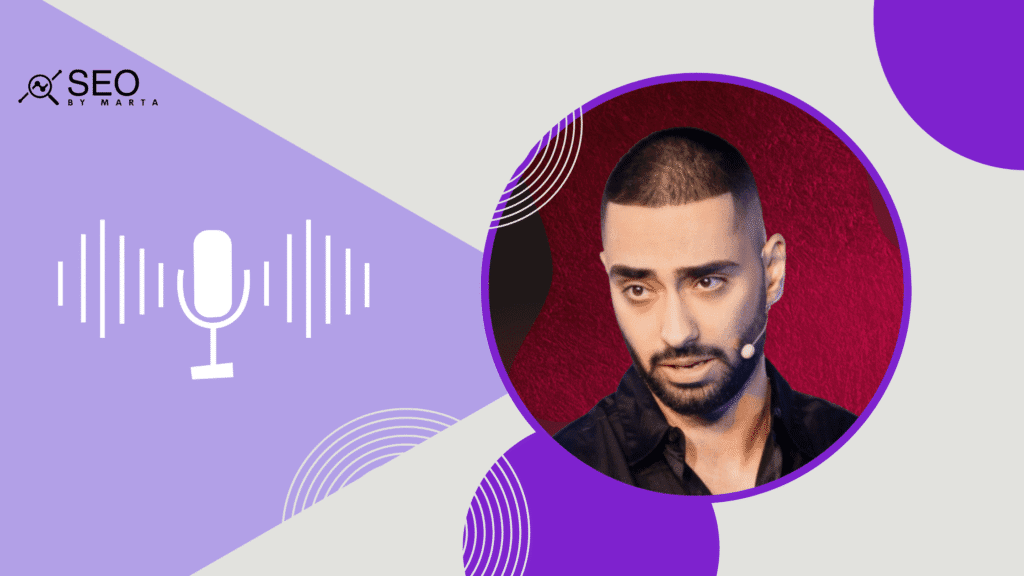About Tom Winter
Tom Winter is the founder of SEOwind.io, an AI-powered content and SEO platform that helps businesses scale organic growth with precision and speed. With years of experience at the intersection of search, automation, and growth marketing, Tom has become a leading voice on how AI is transforming SEO workflows. His expertise lies in building systems that combine the efficiency of AI agents with the judgment and creativity of human oversight — creating content operations that don’t just scale, but also deliver lasting impact.
As a founder, strategist, and international speaker, Tom is recognized for bridging technology with practical marketing. He helps growth teams navigate one of the biggest questions in modern SEO: how do you harness AI for scale without sacrificing trust, quality, and long-term performance?
Interview- How to Balance Automation and Human Oversight to Build Reliable, High-Impact Content Systems
The SEO industry is at a tipping point. On one side, AI promises unprecedented scale, automating tasks that once took teams weeks into minutes. On the other hand, search engines and users demand authenticity, trust, and expertise — qualities that machines alone can’t replicate. Few people are better placed to explore this balance than Tom Winter.
As the founder of SEOwind, Tom has dedicated his work to building AI-powered workflows that don’t replace humans but empower them. His approach is practical and data-driven: use AI for what it does best — speed, analysis, scalability — while keeping humans in the loop to safeguard accuracy, context, and creativity. In this conversation, Tom unpacks how growth teams can design hybrid SEO workflows, where automation and human oversight work together to build reliable, high-impact systems for the future of search.
Q: Tom, many companies rush into AI automation for scale, but often cut out too much human oversight. What are the biggest risks of this “AI-only” approach?
A: The biggest risk is skipping the learning phase and automating before you understand the process.
My philosophy is simple: before you build an automation, go through it manually at least once. I call this approach Human as a Service.
When you do it yourself first, you see where the real bottlenecks and traps are. You understand what data matters, what can break, and where context or nuance makes all the difference.
If you jump straight to AI-only, you scale mistakes instead of insights. You end up with workflows that look efficient but produce shallow, inconsistent, or even misleading output.
The most successful SEO automations start with manual mastery. You first understand the process deeply, then automate based on what you’ve learned. That’s how you build systems that actually work at scale: human-tested, AI-powered.
Q: If you were designing a hybrid workflow from scratch, how would you decide which tasks to fully automate, partially automate, or keep manual?
A: I follow a simple decision framework:
- Repetitive and rule-based tasks → Fully automate.
Examples: keyword clustering, SERP scraping, internal linking, and performance reporting. - Creative or judgment-heavy tasks → Keep human in the loop.
Brief creation, content outlines, and final QA all need human strategy and taste. - Hybrid tasks → Partially automate.
Research and content drafting can be accelerated by AI but guided by human prompts, data validation, and feedback loops.
In short, automate what drains time, not what defines your brand.
Q: One of the biggest challenges is content quality. How can teams ensure AI-driven content doesn’t dilute brand trust or authority in the long run?
A: You protect quality by realizing that great AI-driven content isn’t written in a single prompt. It’s built through context, structure, and iteration.
First, feed the system with context, insights, and research.
AI is only as smart as the data you give it. You need to provide real company knowledge, customer insights, internal research, and examples of your best-performing content.
At SEOwind, we use Custom Insights to inject this expertise directly into the workflow so the output reflects your actual brand experience, not something scraped from the web.
Second, rely on workflows and agents, not one-off generations.
Quality content requires multiple specialized agents (like research, drafting, and refinement) all working within quality loops. Each step produces output that is reviewed, adjusted, and improved in the next iteration. These loops ensure your content aligns with intent, accuracy, and tone before it ever reaches publication.
No single prompt can achieve that level of consistency and credibility. It’s the iterative system that ensures depth and trust.
Third, keep humans in the quality loop.
Even the best automation still needs a layer of human expertise for final validation. Editors and strategists safeguard your brand’s tone, verify facts, and ensure the message resonates with your audience. Human input adds empathy and judgment that AI alone can’t replicate.
In short, AI doesn’t replace your brand’s authority, it amplifies it, but only when it’s powered by your insights, governed by workflows, and refined through continuous human and AI collaboration.
Q: You talk about “human-in-the-loop” SEO. What does that look like in practice — and how do you implement it without slowing down the benefits of automation?
A: Human-in-the-loop SEO means embedding human expertise into every automation cycle where strategy, nuance, or brand alignment matter most.
Let’s take AI writing as an example. You’d have human input at several key stages:
- At the beginning, where you set up the brand voice, company information, and tone guidelines. This step ensures the AI understands who you are, what your brand stands for, and how it should sound.
- During the brief and custom article instruction phase, where a human reviews and enhances the context the AI will use. This is the most crucial step, because it’s where you feed the system with the insights, data, and angles you believe are truly relevant.
- At the end, during the final review. Here, a human evaluates whether the AI executed the task according to the initial vision: checking tone, accuracy, flow, and credibility before publication.
This layered approach ensures that humans guide the strategy and quality, while AI accelerates execution.
It’s not about slowing down automation but designing a workflow where each feedback loop teaches the AI to perform better next time.
When done right, human-in-the-loop SEO becomes a continuous learning system: combining AI’s speed with human judgment to scale high-quality, on-brand content efficiently.
Q: When it comes to scaling content creation, how can teams strike the balance between quantity and originality? Is there a workflow you’ve seen work especially well?
A: Scaling content doesn’t mean multiplying mediocrity. The key is to build repeatable systems that amplify your expertise, not duplicate words.
A workflow that works exceptionally well starts with a strong research and brief foundation.
At SEOwind, every content piece begins with:
- SERP and competitor analysis to understand what’s already working and identify content gaps worth filling.
- Custom Insights to inject brand-specific knowledge, company data, and expert experience that make the content original and credible.
- Iterative drafting by AI agents that ensure coverage, depth, and structure while maintaining consistency across your content library.
- EEAT scoring and refinement, where each draft is evaluated for Expertise, Experience, Authoritativeness, and Trustworthiness. The article is then improved based on that score before it moves forward.
- Human editors who refine tone, narrative, and originality, ensuring each piece feels distinct, high-quality, and aligned with brand voice.
Quantity without differentiation erodes brand trust. But when AI manages the structure and scalability while humans guide quality, creativity, and EEAT, you get the best of both worlds: efficient production and authentic, high-performing content.
Q: Do you think growth teams should build their own AI workflows in-house, or lean on platforms like SEOwind? What are the trade-offs between control and efficiency?
A: In my experience, most growth teams overestimate what it takes to build a working AI content workflow.
Creating something that truly drives results isn’t about connecting prompts to APIs. It’s about combining SEO expertise, AI engineering, and robust quality control. That’s why only a handful of teams have managed to do it successfully, and most who try end up giving up.
Building in-house gives you full control, but it’s a heavy lift. You need developers, SEO strategists, AI specialists, and a QA system to keep quality consistent. Without that combination, you end up with partial automation that produces mixed results.
Using a platform like SEOwind gives you an immediate advantage. You get pre-built, field-tested workflows, multi-agent systems, and continuous improvement baked in. It allows your team to focus on strategy and differentiation, not on maintaining complex infrastructure.
I’ve personally reviewed many AI writing workflows built in tools like Make or n8n. None came close to what we deliver through SEOwind in terms of research precision, EEAT quality, and brand consistency.
That said, one thing has become clear: tools alone aren’t enough. Many companies want AI to do everything autonomously, without human review or brand input. When they realize that true quality requires a human in the loop, they often hesitate to invest resources.
That gap is exactly why we launched SEOwind’s white-label content services for agencies and companies. We bring the workflows, the expertise, and the human oversight needed to deliver top-tier, AI-assisted content at scale. It’s the perfect bridge for organizations that want the results, but not the operational complexity.
Q: SEO KPIs are shifting in the AI era. Beyond rankings and clicks, what metrics should teams measure to evaluate whether their hybrid workflows are working?
A: Traditional SEO metrics like rankings and CTR still matter, but they’re no longer the full picture. In the AI era, success means being retrievable, referenced, and trusted by both search engines and LLMs.
Here are the KPIs I focus on:
- Topical and entity coverage – how well your content ecosystem covers the full topic cluster, connecting key entities and intent types.
- LLM visibility and mentions – how often your brand or content appears in AI-generated answers or summaries.
- User engagement depth – scroll depth, dwell time, and return visits that signal your content satisfies intent, not just attracts clicks.
- Conversion impact – how AI-assisted content contributes to leads, pipeline, or assisted conversions.
- EEAT consistency – measuring how your content reflects expertise, experience, authoritativeness, and trust across assets.
The north star metric is no longer “ranking first.” It’s becoming the most trusted source that both humans and AIs reference.
Conclusion
Tom Winter’s perspective brings a refreshing dose of realism to the ongoing debate around AI and SEO. While many chase automation as a shortcut to scale, his philosophy centers on discipline, process, and balance. AI, in his view, is a powerful accelerator, but only when guided by human understanding, strategy, and oversight.
Through SEOwind, Tom has shown that efficiency and quality don’t have to be opposing forces. His “human-in-the-loop” approach demonstrates how teams can harness automation to move faster while maintaining brand trust and content credibility.
As the SEO industry continues to evolve, Tom’s message stands out: AI will shape the future of search, but the teams that thrive will be those who remember that technology performs best when humans stay in the loop.it si




